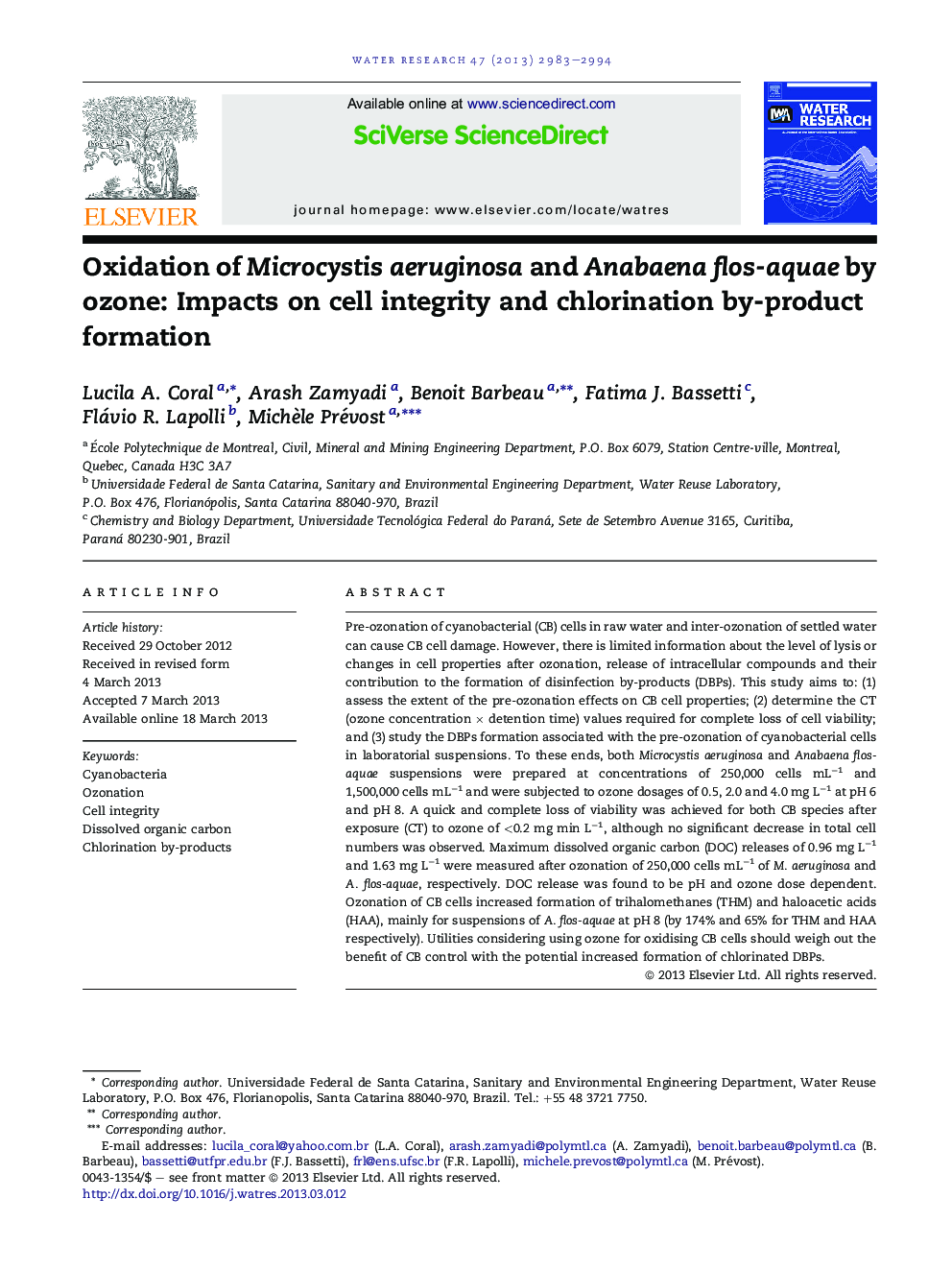| کد مقاله | کد نشریه | سال انتشار | مقاله انگلیسی | نسخه تمام متن |
|---|---|---|---|---|
| 4482114 | 1316848 | 2013 | 12 صفحه PDF | دانلود رایگان |

• Pre-ozonation effects on Microcystis aeruginosa and Anabaena flos-aquae cells.
• The potential formation of DBPs from cyanobacterial cells.
• Immediate cell membrane damage at CT (ozone concentration × detention time) ≤0.2 mg min L−1 for all ozonation conditions.
• No significant cell lysis was observed for most ozonation conditions.
• Release of intracellular compounds contributed to the pool of chlorinated DBPs.
Pre-ozonation of cyanobacterial (CB) cells in raw water and inter-ozonation of settled water can cause CB cell damage. However, there is limited information about the level of lysis or changes in cell properties after ozonation, release of intracellular compounds and their contribution to the formation of disinfection by-products (DBPs). This study aims to: (1) assess the extent of the pre-ozonation effects on CB cell properties; (2) determine the CT (ozone concentration × detention time) values required for complete loss of cell viability; and (3) study the DBPs formation associated with the pre-ozonation of cyanobacterial cells in laboratorial suspensions. To these ends, both Microcystis aeruginosa and Anabaena flos-aquae suspensions were prepared at concentrations of 250,000 cells mL−1 and 1,500,000 cells mL−1 and were subjected to ozone dosages of 0.5, 2.0 and 4.0 mg L−1 at pH 6 and pH 8. A quick and complete loss of viability was achieved for both CB species after exposure (CT) to ozone of <0.2 mg min L−1, although no significant decrease in total cell numbers was observed. Maximum dissolved organic carbon (DOC) releases of 0.96 mg L−1 and 1.63 mg L−1 were measured after ozonation of 250,000 cells mL−1 of M. aeruginosa and A. flos-aquae, respectively. DOC release was found to be pH and ozone dose dependent. Ozonation of CB cells increased formation of trihalomethanes (THM) and haloacetic acids (HAA), mainly for suspensions of A. flos-aquae at pH 8 (by 174% and 65% for THM and HAA respectively). Utilities considering using ozone for oxidising CB cells should weigh out the benefit of CB control with the potential increased formation of chlorinated DBPs.
Figure optionsDownload high-quality image (75 K)Download as PowerPoint slide
Journal: Water Research - Volume 47, Issue 9, 1 June 2013, Pages 2983–2994